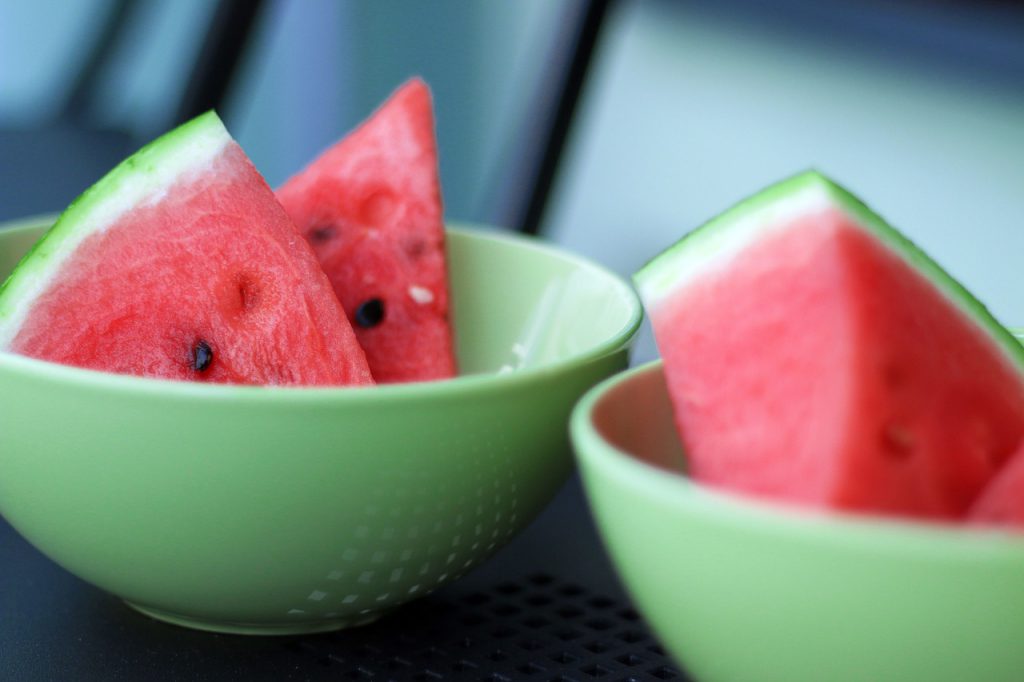
When I was growing up, watermelons were a favorite summer time fruit in our household. On a hot day, the taste of a cool slice of watermelon (with a pinch of salt) was not only refreshing, but also helped us stay hydrated. My mom, who is a lover of watermelons herself, very rarely purchased the fruit because neighbors and family friends always shared their crops with us. One summer, we decided to grow our own watermelons. We were very excited to use seeds that had been saved from the previous year. While we had good intentions, needless to say, our attempt failed miserably. It was at this point that we decided to stick with eating watermelons instead of growing them. Perhaps our gardening skills needed some work.
Here are a couple of facts about watermelons:
- Watermelons, while very tasty are also very nutritious. They are low in fat and calories and high in potassium.
- They are mostly water (about 92 percent), but have lots of nutrients. Each juicy bite has significant levels of vitamins A, B6 and C, lots of lycopene, antioxidants and amino acids.
- Watermelons also have many health benefits including: lowering the risk of heart disease, reducing inflammation, aiding in digestion, keeping skin and hair moisturized.
- For more fun facts, check here: http://www.watermelon.org/Faqs
Choosing the right watermelon can be a little tricky. You should look for one that is heavy for its size with a rind that is relatively smooth; neither overly shiny nor overly dull; without any cuts or bruises on its surface which might have occurred during transportation. Once at home, place the fruit in a cool, well-ventilated place. The cut sections should be kept inside the refrigerator.
After choosing the right watermelon, let’s prepare it for serving. First, you should wash the whole melon in cold running water or clean it with a wet cloth to remove surface dirt or any other residue. Then, it’s ready to serve. The watermelon can be cubed, scooped into balls or just eaten the old-fashioned way — sliced and right off of the rind.
Fresh watermelon should be eaten as it is, without any additions/seasonings to experience its delicious, natural sweet taste. Here are some serving tips:
- Cubes or sections of the melon are a great addition to fruit salad. Top its wedges with cold chocolate cream and relish!
- Jam, sorbet, fruit cocktail, and juice are some nutritious and delicious recipes you can make with melons.
- The seeds are roasted and eaten as a snack in some Asian countries.
- Its rind is used and eaten as a vegetable in some South American countries.
Try this easy recipe! It’s unique, but one that I believe you will enjoy.
Stephanie